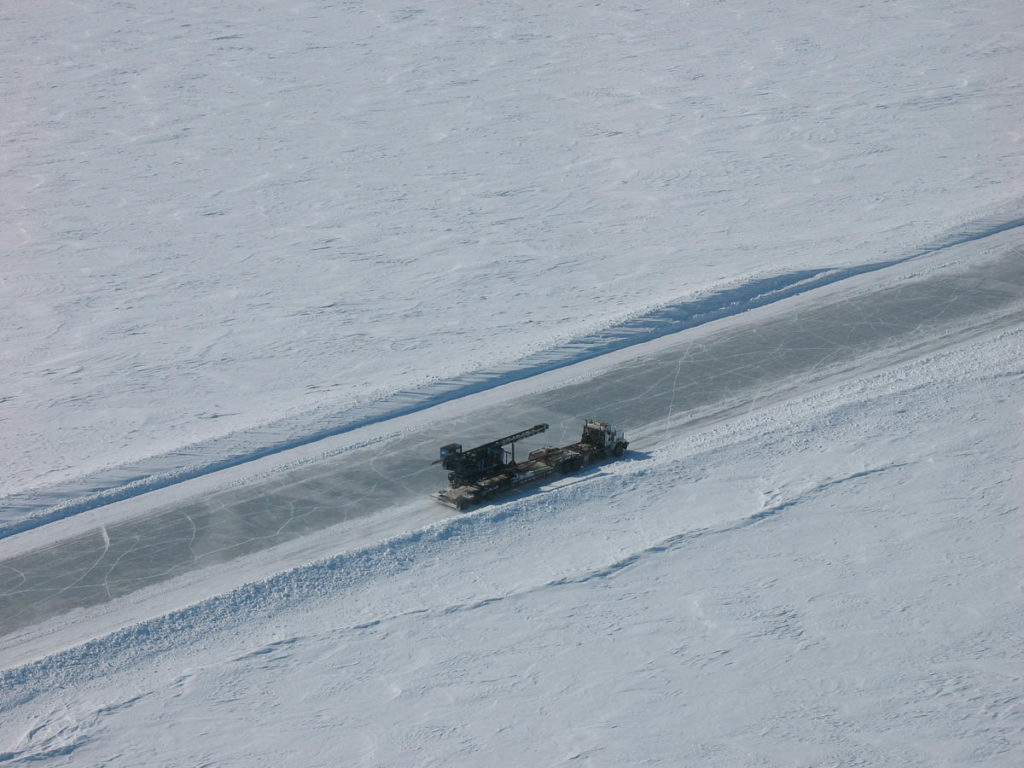The ice road network spans the Northwest Territories, resupplying communities and connecting them to civilization. Winter means freedom in remote communities. They use the ice roads to transport supplies, visit family members, and travel to larger communities. Nearly 2,000 kilometres of icy highways are plowed through terrain that is impassable (or non-existent) in the summer.
Northern Canada’s winter road systems are basic access routes to remote northern communities with no alignment standards. There are no posted speed limit signs on land roads, and the recommended speed limit for vehicles weighing seven tonnes or more on all ice roads is 15 km/h. Winter roads are built on the land’s and ice’s natural terrain. They travel through muskeg, rocky ridges, streams, rivers, and lakes. Weather changes can cause the road surface to deteriorate quickly.
An ice highway or ice bridge is a man-made structure that runs on the surface of frozen water (a river, a lake or a sea water expanse). Ice roads are usually part of a winter road, but they can also be simple structures that connect two shorelines. They can be planned, built, and maintained to remain safe and effective, and a number of guidelines with information on this subject have been published, and can be built year after year, to meet community needs during the winter. It could also be for a year or two to supply specific operations, such as a hydroelectric project or offshore drilling sites. Every year, the ice road must be rebuilt. Work on the road begins shortly after Christmas. When the ice is one meter (42 inches) thick, it can support a fully loaded truck carrying more than 40 metric tons (44 tons) of fuel. The speed limit for full trucks travelling north is 25 kilometres (15.5 miles) per hour.

Winter roads connect 12 towns in the Northwest Territories, providing them with temporary access to the outside world. Some of the routes are short and were built and maintained by the territory’s transportation department. The winter road to Nahanni Butte, for example, is only a few kilometres long, crossing the Liard River and connecting to Highway 7. The Mackenzie Valley winter road begins in Wrigley and connects five communities, the farthest of which is 651 kilometres away, Colville Lake.
A Class 1 Commercial Driver’s License is required to work as an ice road trucker (CDL). You must also pass a medical exam, have a clean driving record, be at least 19 years old, and have at least three years of Class 1 driving experience.The pay is competitive, but If you are not prepared, the consequences of an unexpected delay, breakdown, or accident while travelling in this remote area can be fatal. It is the driver’s responsibility to make his or her own arrangements for assistance. In the event of a problem, assistance may take a long time to arrive. Every vehicle travelling on the winter road system should have adequate clothing, personal medication, enough fuel to get to your destination, vehicle and survival equipment, a satellite phone, and CB communication.
The ice roads of Canada and Alaska were prominently featured in the History Channel’s reality series “Ice Road Truckers”, albeit embellished for viewing.




